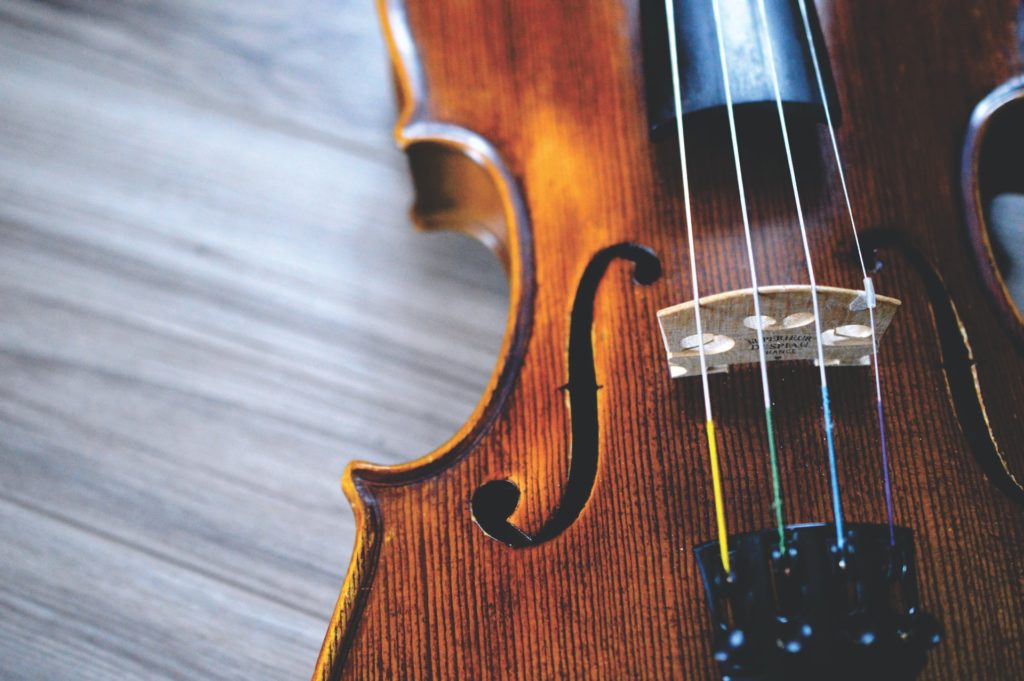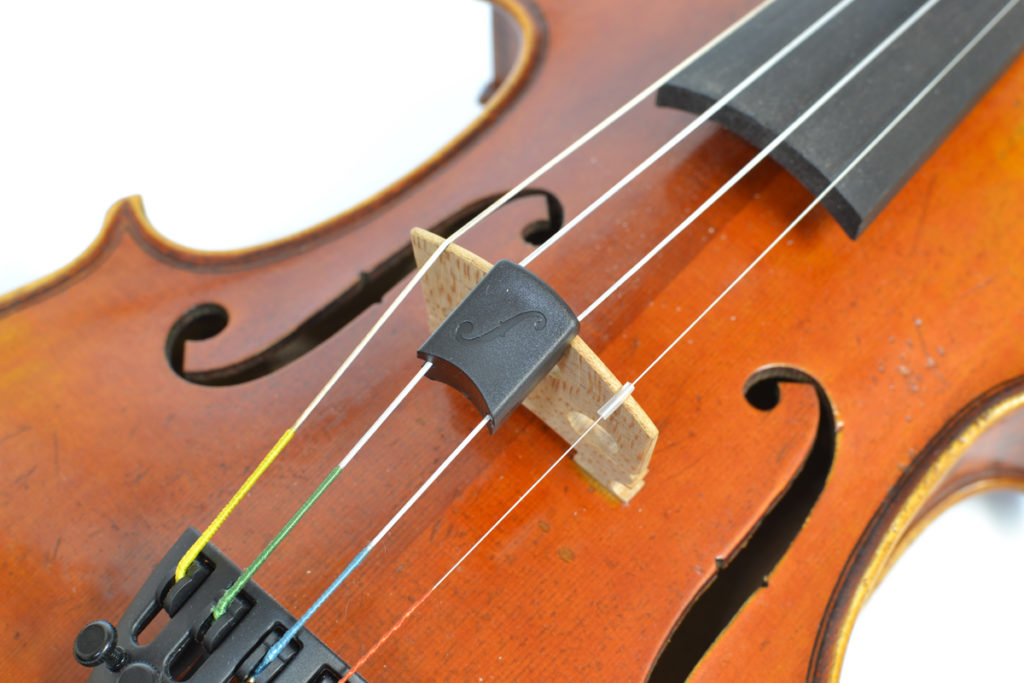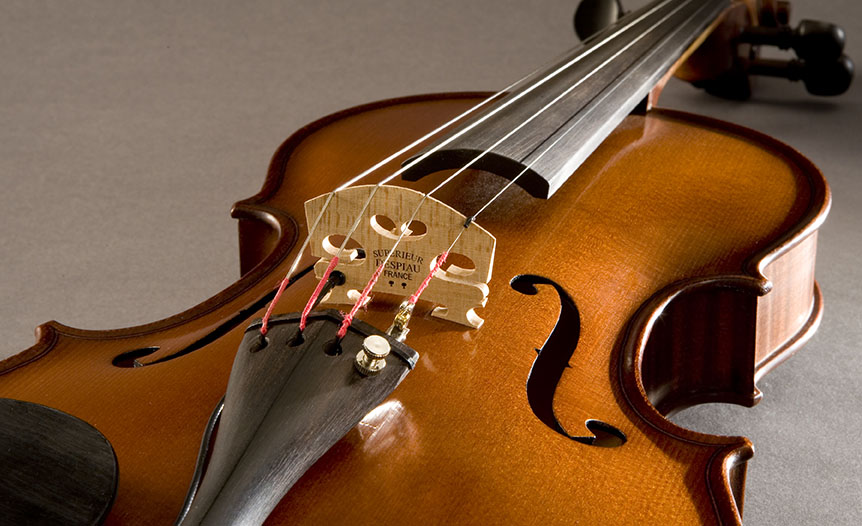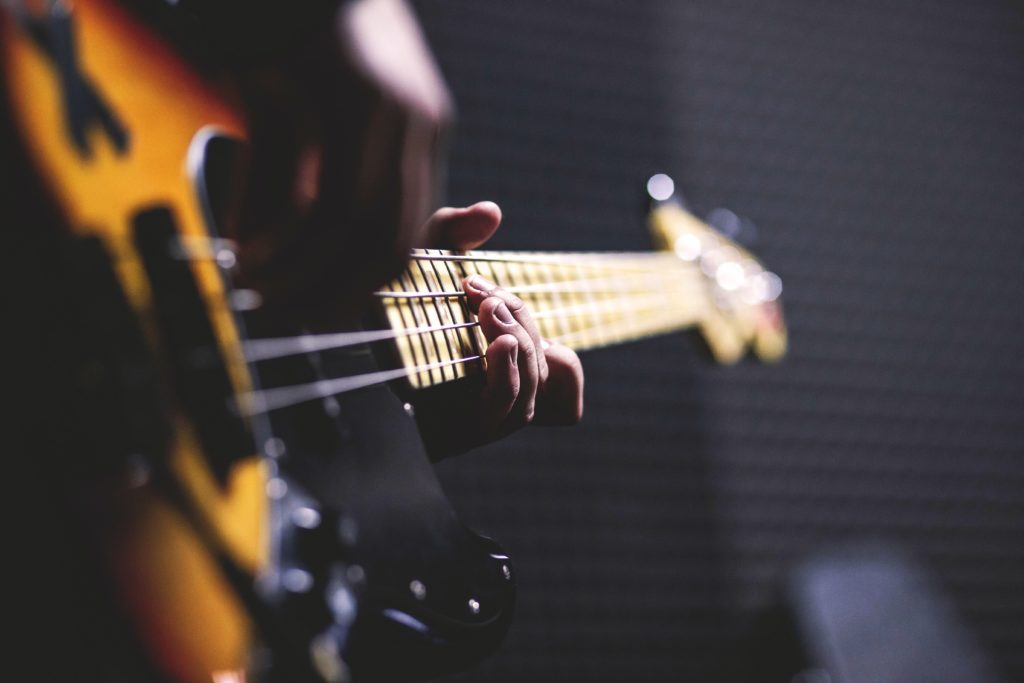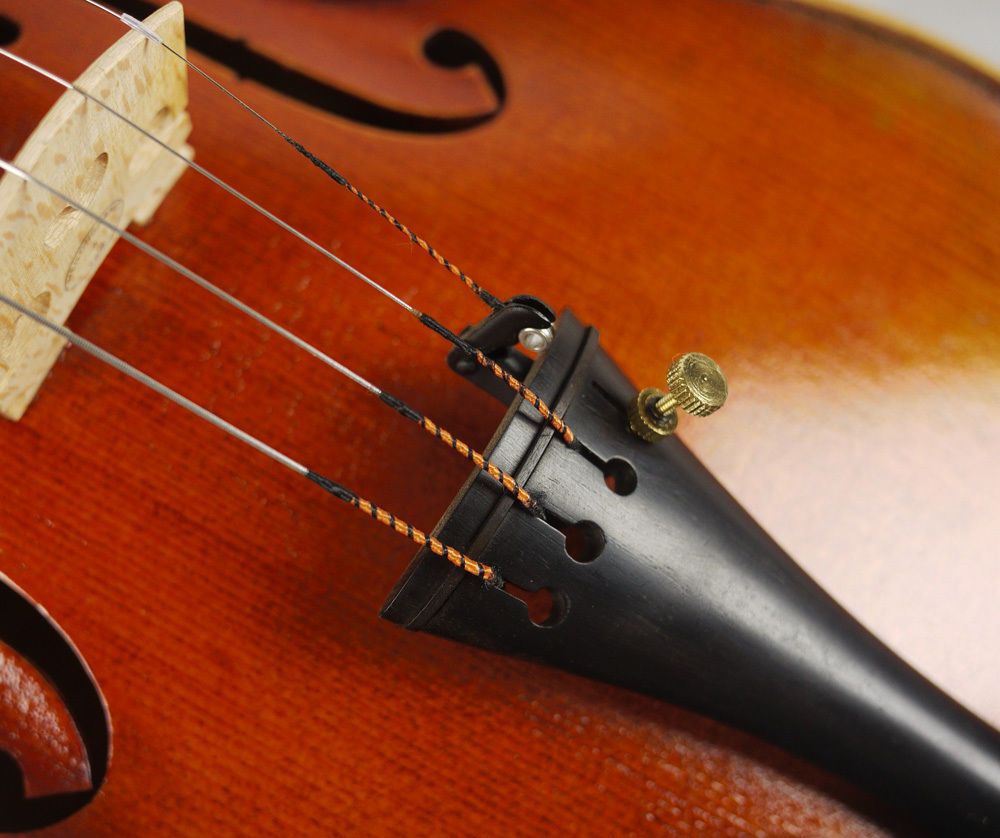What is the hardest instrument to play? Most of us have dreamed of being able to play an instrument at some point in our lives. It could be playing guitar in front of legions of screaming fans or tickling the ivories in a prestigious concert hall. It’s much easier said than done.
Playing any instrument takes time and dedication to learn. Playing one well is even more of an investment. You need access to the instrument. Then, you need a teacher. After hours and hours of practice, you may learn enough to play your favorite song.
If you’re thinking of picking up an instrument for the first time, you won’t want to start with any of the examples on this list. They’re all notoriously difficult to pick up and even harder to master. A few of them will be familiar, but there are some surprises you may not have imagined.
A Quick Glance At The Hardest Instruments to Play
1. Harpsichord
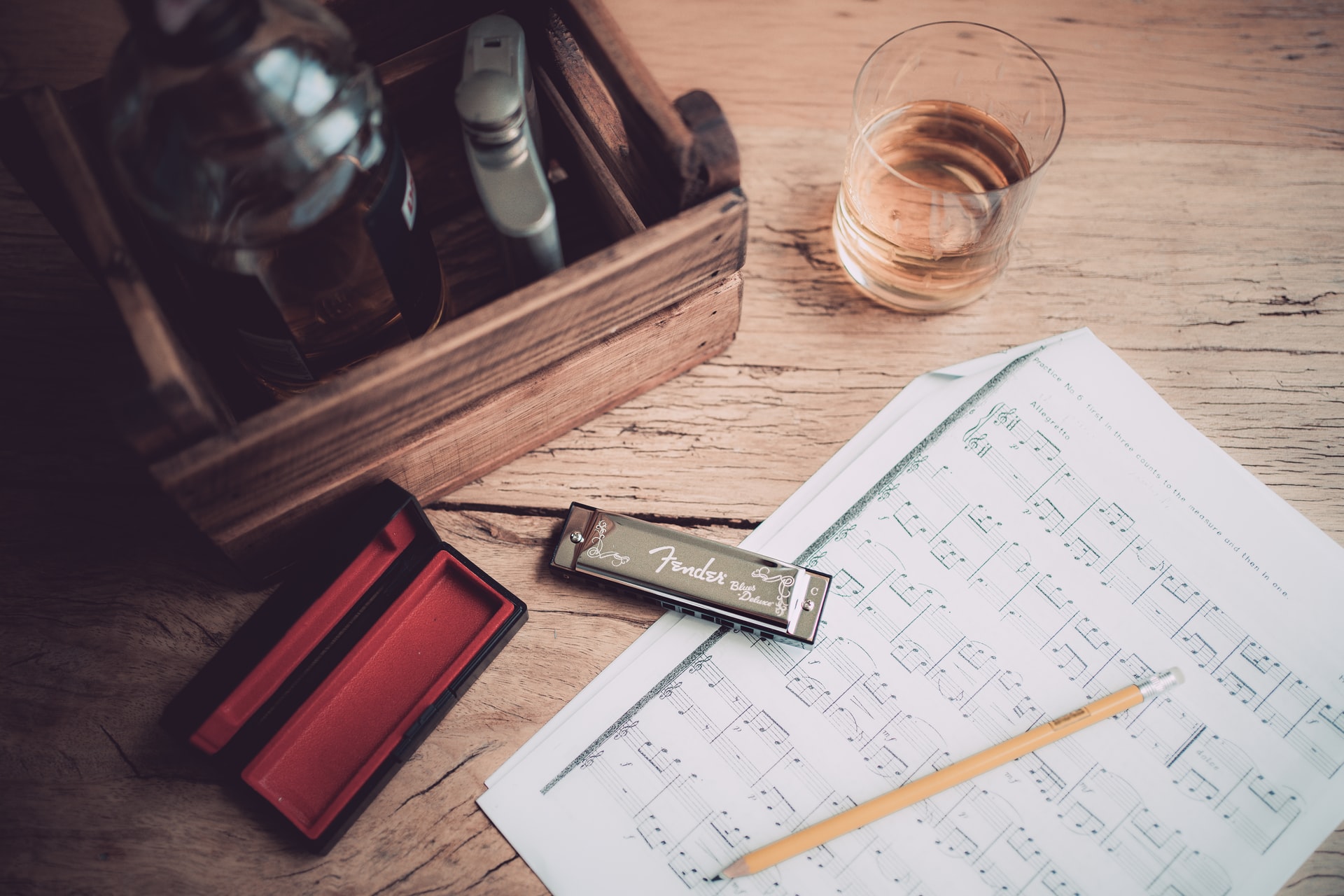
At first glance, the harpsichord might look like a small, elaborately decorated piano. It’s a classical instrument, popular in 16th century Europe. If you’ve ever heard Step by Vampire Weekend or nearly anything by Johann Sebastian Bach, you’ve heard a harpsichord.
The baroque period in music was, like most everything then, particularly ornamented. It gave rise to the theorbo, early violins, oboes, and harpsichords. It seems they had a penchant for difficult instruments back then.
Both pianos and harpsichords are string instruments but there are several important differences. A piano uses hammers that strike the strings inside the instrument. A harpsichord’s strings are plucked by parts called plectrums.
Part of what makes the harpsichord one of the hardest instruments to play is that it has multiple keyboards. Some have two and others have three. The two keyboard instruments have two different tones because the upper keyboard plucks one string and the lower keyboard plucks two strings per note.
If you think playing the piano is difficult, try playing one with two keyboards! These instruments have a very regal sound and a harpsichord from Germany will sound very different from a French harpsichord.
2. Bagpipes
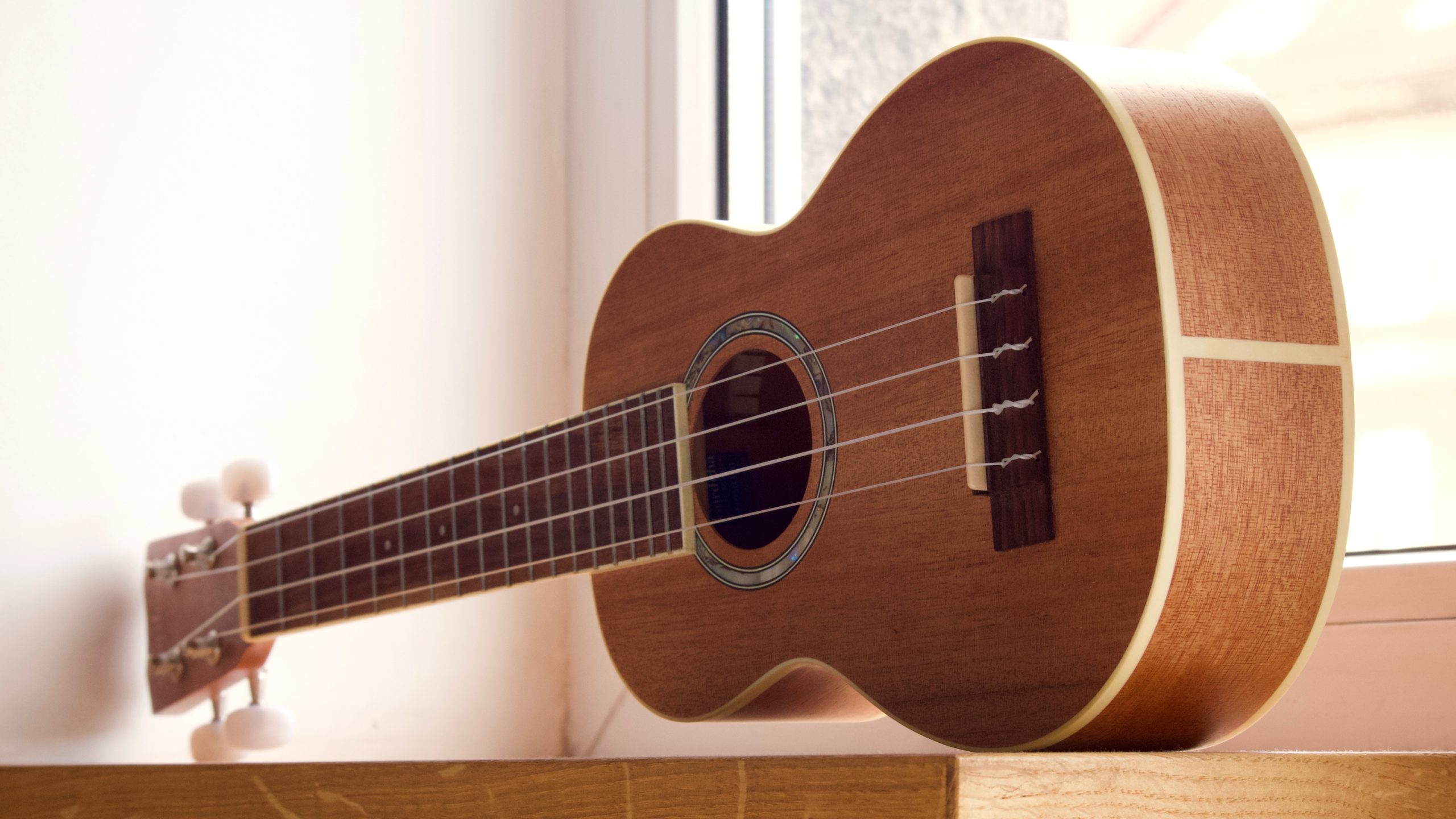
Bagpipes are familiar to most of us. You can hear them at almost any St. Patrick’s Day festival or formal military ceremony. They’re played all over the world, but a lot of people associate them with Scotland.
Originally, they are thought to have come from Ancient Egypt. Some think they made their way north either by the Romans or tribes from Ireland. The Highlanders of Scotland made the bagpipes into what they are today.
A set of bagpipes consists of a bag, a blowpipe, a chanter, and a drone. The bag is traditionally made from the stomach of an animal and helps regulate air pressure. The blowpipe is attached to the bag. The player uses it to blow air into the instrument.
Bagpipes are a reed instrument, but the reed is part of the chanter. The chanter provides the melody. It’s an open-ended pipe that the player can use to create the melody. Finally, the drone is another open pipe, but this one isn’t fingered. It also has a reed.
This instrument is one of the hardest instruments to play mainly because you have to create a constant airflow through the bagpipes. It’s done by a combination of blowing into the bag and squeezing the bag with one arm.
3. French Horn

The French horn is used in bands and orchestras today as an integral part of these ensembles. It’s a brass instrument with a bell, a mouthpiece, three valves, and twenty feet of tube coiled into an elaborate design.
The long tube presents a challenge because the player needs to fill it all with air. That takes substantial lung capacity and breath control. Lips are important when it comes to playing the French horn. They have to vibrate together in a very specific way to produce the right sound.
The fancy word for what goes on with the lips is “embouchure.” It’s the same type of buzzing that’s used to play trumpets, trombones, and other brass instruments. An Australian instrument, called a didgeridoo, uses a similar lip vibration.
All of this heavy breathing and lip vibration tends to have a sort of gross side effect – spit. If spit accumulates in the instrument, the sound is ruined. That’s the reason for the French horn’s water key or spit valve. It allows the player to empty the moisture from inside the horn.
Finally, in addition to the valves that change the horn’s pitch, the player often puts their hand into the bell. This changes the pitch as well. Since this is also how the player holds the instrument up, it can be tricky to get the right-hand position.
4. Accordion

When it comes to pop music, there’s only one king of the accordion, Weird Al Yankovich. Outside of polka music, his music is how most people were introduced to the instrument. You can also hear it in a lot of Tejano and mariachi music.
It’s difficult to pinpoint just where and when the accordion was invented. The best guess right now is that it came from Russia in 1830. That was an updated version of a similar instrument invented in Germany around eight years earlier.
An accordion has a lot going on. There’s a keyboard, a bellows, and a set of 120 buttons! One hand works the keyboard, the other works the buttons, and both hands work the bellows open and closed all at the same time.
The bellows are between the keyboard and the buttons. They’re the expandable section made up of many folds. When we say something has an “accordion fold” this is the part we’re referring to. The bellows have to be opened and closed in such a way that airflow is constantly moving through the instrument.
The average accordion weighs anywhere from 12 to 30 pounds. Even though it has straps to secure it to the front of a player’s body, it’s a pretty heavy instrument to lug around. If you want strong arms without going to the gym, start learning the accordion.
5. Sitar

The sitar is a traditional instrument from India. In the 18th century, the sitar came to resemble the version we have today. In the 1950s and 60s a musician named Ravi Shankar helped make the sitar popular in the western world.
In India, the sitar is played mostly in the northern part of the country. Early versions began to morph into what we know today in about the 13th century. The name means “thirty strings” but the instrument never has more than 21.
Sitars are string instruments and roughly resemble a guitar or banjo. They can have 18 to 21 strings that lay against frets along the neck. Some of those strings also go underneath the frets to give the instrument resonance. The base of the sitar is often made from a guard.
The frets are moveable and the secondary set of strings are tunable via tuning pegs that run along the next of the sitar. There are different styles of tunings depending on the type of music you want to play, but no single standard tuning.
This instrument could be the hardest instrument to play unless you have a good teacher. The sitar is steeped in tradition and doesn’t occupy the same musical space as a guitar. Think more in terms of melody than accompaniment.
6. Pedal steel guitar
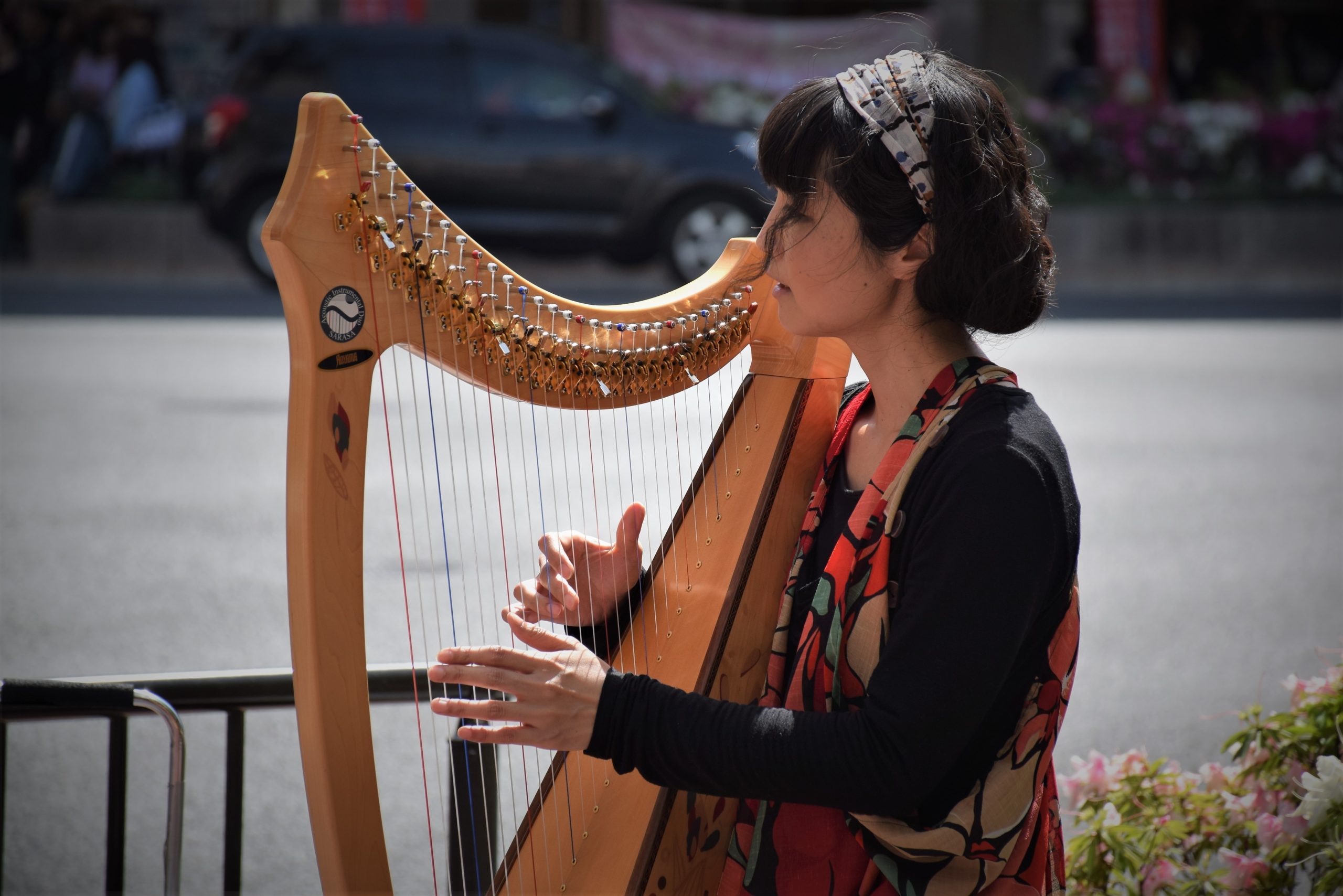
This isn’t your grandpa’s Les Paul. It’s not even a normal guitar made of metal. A pedal steel guitar is an instrument you play sitting down. As the name implies, it has pedals — eight of them. The sound they make is featured prominently in country music.
As you might expect, the instrument has a very metallic sound. This guitar has much more resonance and smooth transition from note to note. You can also create a very distinctive-sounding vibrato using a combination of techniques.
Sitting at an instrument with pedals might remind you of another instrument, a piano. Instead of keys, however, a pedal steel guitar has two horizontal necks complete with frets and strings. If strings and pedals weren’t enough, there are also knee levers to control.
You play the pedal steel guitar by plucking the strings with finger picks. Your other hand controls the bar, which is a smooth cylindrical piece of metal or glass. The bar is also called a slide and it resembles a CO2 or NO2 cartridge.
The slide helps make a smooth transition between notes. The pedals raise the notes up. For example, to raise a B note to a B sharp, you’d press the first pedal. You can press combinations of pedals together to make different notes. The knee levers lower notes.
To play a pedal steel guitar, you need not only musical talent, but a whole lot of coordination and memory. That’s why this instrument might be the hardest instrument to play.
7. Pipe organ

Pipe organs produce a massive sound and take up a massive amount of space. Very few homes in the world have pipe organs in them. You’ll find this instrument mostly in churches and cathedrals. If you’ve seen Phantom of the Opera or the Grand Budapest Hotel, you’ve heard a pipe organ.
Technically, the pipe organ is a wind instrument. The player sits at a keyboard, or rather, multiple keyboards stacked on one another. In most cases, there are three keyboards. Those are just the keyboards you play with your hands. There’s a fourth keyboard that you play with your feet!
Thankfully, you don’t have to blow into a pipe organ to create the “wind” for this instrument. Any normal person would soon pass out from the effort. Air was generated by a set of bellows. The bellows used to be so large that a second person was needed just to pump them.
Now, the air is provided by means of a motor that sends air through the blowers when the player presses a key on the keyboard. When the player does this, it opens a valve that lets air in. The air rushes through the pipe like a gigantic whistle.
Trying to coordinate what both of your hands and both of your feet are doing at the same time is why the pipe organ might be the hardest instrument to play. But, if you’re really good at Dance, Dance, Revolution, your skills might come in handy here.
8. Theorbo

Here’s one you might not have heard of before. A theorbo is a string instrument like a guitar or a viola. It’s an old one, from the Baroque period of classical music. It was developed after the rise of opera music to give more power and drama to the accompaniment.
The theorbo is essentially a lute with a very large neck. Actually, it’s like a lute and a bass lute combined into one instrument. The strings are divided on the neck. One set is about half the length of the other. The bass strings extend from the saddle to the end of the neck. The other strings only go about halfway down the neck.
The neck is so long that it collapses in half and has to be unfolded before playing. That means it must be tuned every time it’s opened up. It’s still quite difficult to transport, even with this collapsable portion closed.
What’s the reason for the strange string situation? There are two octaves possible from the theorbo. One, the one with the longest strings, produces a very low, bass sound. The other, shorter strings, are much more like a guitar.
One reason the theorbo is one of the hardest to play is that the strings aren’t set up in note order. So, the first open string is in the middle. There are from 11 to 14 strings on this instrument. The 14-string instruments have seven fretted strings and seven bass strings. The bass strings are at the top.
9. Theremin
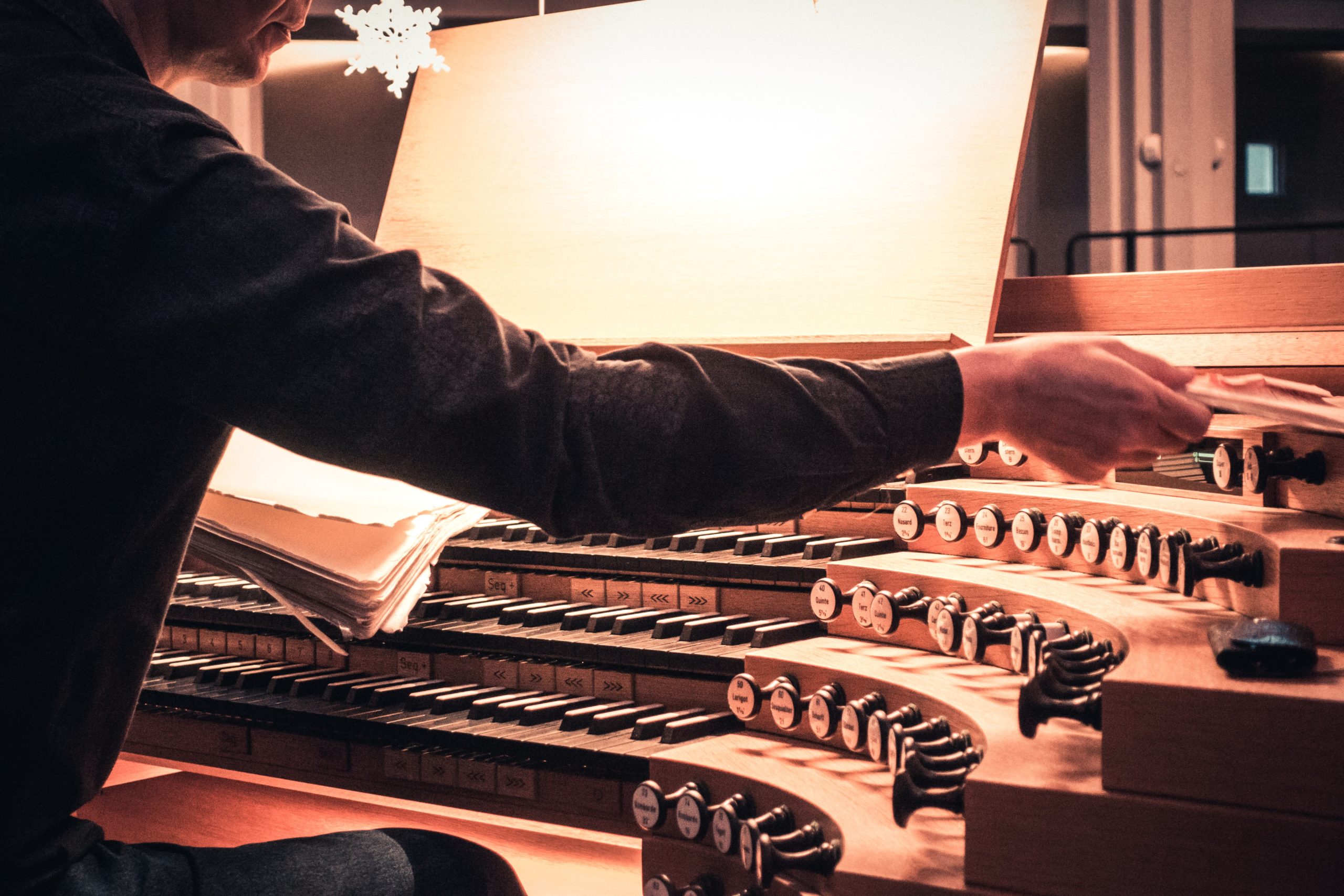
The theremin is the only instrument on this list – or maybe anywhere – that you play without touching. It has no strings, keys, reeds, or buttons. There’s nothing to pluck or tune but the distance between you and the instrument.
It’s probably the most modern on this list of hardest instruments to play. The theremin was developed in 1928 by Leon Theremin. Interestingly enough, it came out of Soviet experiments with proximity sensors. A proximity sensor uses magnetic fields to sense objects around it without touching them.
A theremin typically has two metal antennas. One is vertical and one is at the other end of the instrument, resting horizontally. The vertical antenna controls pitch and the horizontal controls volume. The distance your hands are from either antenna determines how loud or pitched the sound is.
Even if you haven’t heard of a theremin, you’ve likely heard the sounds they make. They’re responsible for the “ooo-EEE-Oooo” eerie sound effects in old sci-fi movies. The British murder mystery show, Midsomer Murders, has a theremin in the opening credits of each episode.
10. Violin
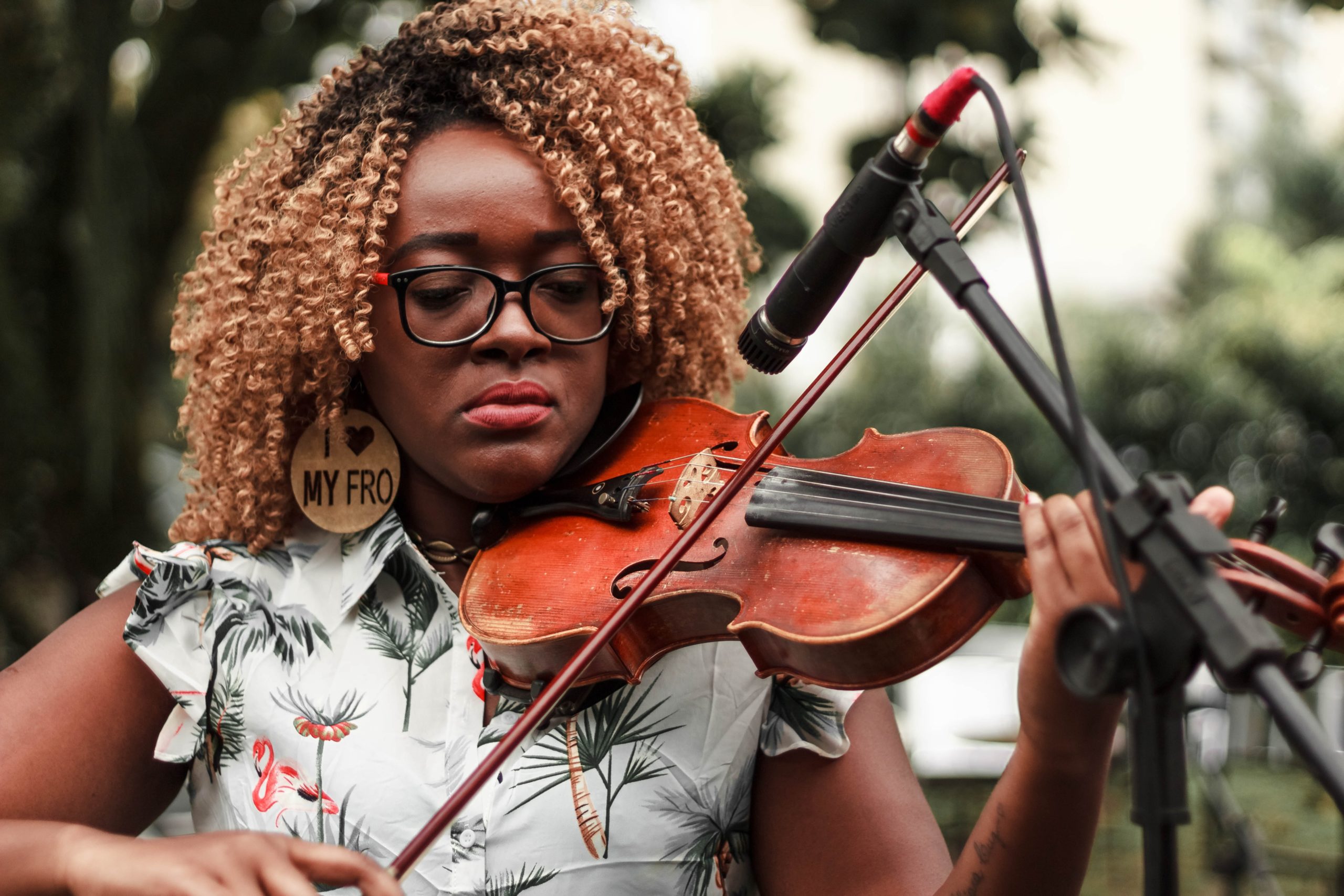
Violins are one of the world’s most recognizable instruments. They have existed in their modern form for three centuries. Violins can also be very expensive instruments. The most anyone has paid for a violin was about $15 million. That particular instrument was made by Stradivari in 1721.
Violins roughly resemble small guitars that you play held under your neck. Unlike a guitar, however, the strings are usually manipulated by a bow. The bow is strung with a ribbon of horsehair covered in rosin. The texture created by the rosin provides friction and vibration on the strings.
If they’re so common, they can’t possibly be the hardest instrument to play, right? Wrong. First of all, it can be a very discouraging instrument to learn. Not many people can stick with it long enough to play a song even passably well. It takes a lot of work to sound good. Violin doesn’t offer the instant gratification of pressing a piano key or plucking a guitar string.
There is a great deal of multitasking involved with playing the violin. You have to read music and keep rhythm just like with a lot of other instruments. But, you simultaneously have to watch a conductor for cues, perfect your bowing technique, watch your posture, and make your instrument sound expressive.
Conclusion
Are you ready to give any of these instruments a try? The first step to learning any instrument is getting your hands on one. If you have enough money and enough space you could try the biggest instrument – the pipe organ.
Finding a teacher isn’t always as difficult. For something like the theorbo and the harpsichord, a tutor might be difficult to come by but a violin teacher is usually nearby. Videos can suffice at least at a beginner level for an instrument like the theremin.
How many of these instruments have you seen in person? Which would you like to learn to play? Which one do you think would be the most challenging?
